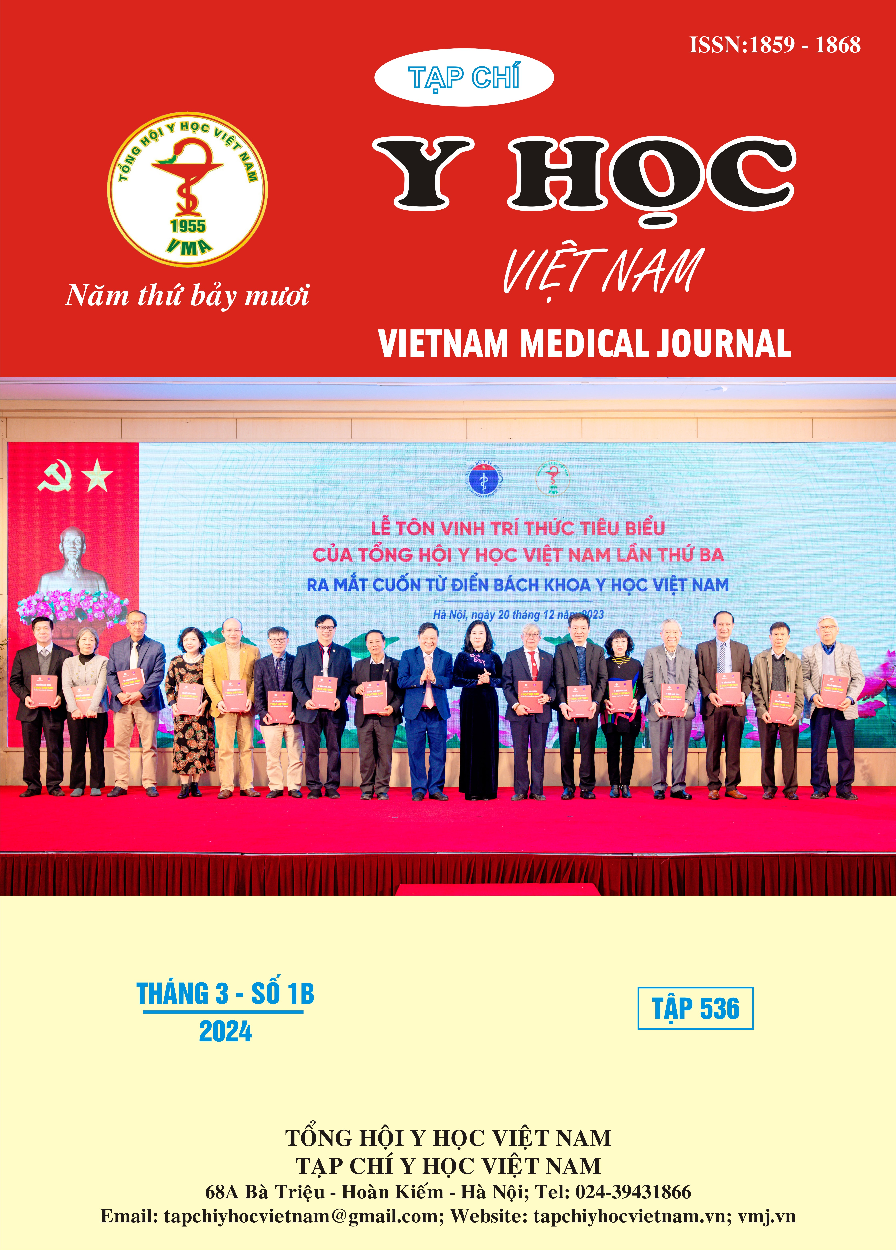CLINICAL FEATURES, PARACLINICAL FINDINGS, AND TREATMENT OUTCOMES OF AN ACUTE EXACERBATION OF CHRONIC OBSTRUCTIVE PULMONARY DISEASE WITH DIABETES MELLITUS
Main Article Content
Abstract
Objective: The study aims to investigate the clinical characteristics, clinical manifestations, and treatment outcomes of patients with acute exacerbations of chronic obstructive pulmonary disease (COPD) and diabetes mellitus (DM) at the Central Lung Hospital. Subjects and Methods: This was a prospective cross-sectional study. A total of 236 patients diagnosed with acute COPD exacerbations were included, among which 43 had coexisting diabetes mellitus (DM) and 193 had COPD without DM. All patients received inpatient treatment at the Central Lung Hospital. Results: The prevalence of DM in COPD patients was 18.22%. The mean age was 68.77 ± 8.91 years, with 76.7% male and 23.3% female patients. The average number of exacerbations per year was 2.67 ± 2.08, and patients with more than two exacerbations per year accounted for 79.1% of the DM group, which was significantly higher than the non-DM group. Blood gas analysis showed that pH was 7.36 ± 0.08, pCO2 was 58.24 ± 17.35, and HCO3 was 32.78 ± 6.5, which were worse in the DM group compared to the non-DM group. CRP levels were 58.61 ± 65.63 mg/l, Procalcitonin levels were 0.48 ± 0.66 ng/ml. The prevalence of dyslipidemia was 78.3%, higher than the non-DM group. 58% of patients required insulin for blood glucose control, and 77% needed adjustments in their DM treatment protocols. The rate of mechanical ventilation was 39.5%, and the rate of emergency hospitalization/ admission was 44.2%, both significantly higher in the DM group compared to the non-DM group. The average length of hospital stay was 17.47 ± 12.25 days. The mortality rate and severity of cases were 16.3%, which were significantly higher in the DM group compared to the non-DM group. Conclusion: Diabetes mellitus exacerbates the clinical symptoms, manifestations, and treatment outcomes of patients with acute exacerbations of chronic obstructive pulmonary disease.
Article Details
References
2. Đinh Ngoc Sỹ (2009). Dịch tễ học COPD ở Việt Nam và các biện pháp phòng và điều trị, Đề tài Cấp Nhà nước KC10.06-10
3. Q. J. C. Ehrlich SF, Van Den Eeden SK, Shan J, Ferrara A, (2010). Patients diagnosed with diabetes are at increased risk for asthma, chronic obstructive pulmonary disease, pulmonary fibrosis, and pneumonia but not lung cancer. Diabetes Care., 33(1), 55–60.
4. G. S. Lange P1, Kastrup J, Mortensen J, (1989). Diabetes mellitus, plasma glucose and lung function in a cross-sectional population study. Eur Respir J, 2(1), 14-19.
5. K. M. Davis WA, Kendall P, Grange V, Davis TM, Fremantle DS...;: (2004). Glycemic exposure is associated with reduced pulmonary function in type 2 diabetes: the Fremantle Diabetes Study. Diabetes Care., 27(3), 752–757.
6. M. I. Lee CT, Lin CH, Lin SH, Hsieh MC, (2013). Chronic obstructive pulmonary disease: a risk factor for type 2 diabetes: a nationwide population-based study. Eur J Clin Invest., 43(11), 1113–1119.
7. B. E. E. R. M. Wells CE (2013). Metabolic syndrome and European Respiratory Monograph 59: COPD and Comorbidity. 59, 117–134.
8. GOLD (2015). Global Strategy for Diognosis Mamagement and Prevention of COPD.
9. American Diabetes Association (2015). Standards Of Medical Care in Diabetes., Diabetes Care Volume 38,, Supplement 1,.
10. Anthonisen NR et al (1987). Antibiotic theraphy in exacerbation of COPD. Ann Inter Med, 106, 196 - 204.


